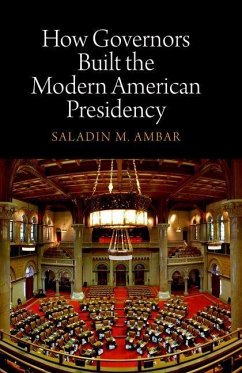A governor's mansion is often the last stop for politicians who plan to move into the White House. Before Barack Obama was elected president of the United States, four of his last five predecessors had been governors. Executive experience at the state level informs individual presidencies, and, as Saladin M. Ambar argues, the actions of governors-turned-presidents changed the nature of the presidency itself long ago. How Governors Built the Modern American Presidency is the first book to explicitly credit governors with making the presidency what it is today. By examining the governorships of such presidential stalwarts as Grover Cleveland, Theodore Roosevelt, Woodrow Wilson, and Franklin D. Roosevelt, political scientist Ambar shows how gubernatorial experience made the difference in establishing modern presidential practice. The book also delves into the careers of Wisconsin's Bob La Follette and California's Hiram Johnson, demonstrating how these governors reshaped the presidency through their activism. As Ambar reminds readers, governors as far back as Samuel J. Tilden of New York, who ran against Rutherford Hayes in the controversial presidential election of 1876, paved the way for a more assertive national leadership. Ambar explodes the idea that the modern presidency began after 1945, instead placing its origins squarely in the Progressive Era. This innovative study uncovers neglected aspects of the evolution of the nation's executive branch, placing American governors at the heart of what the presidency has become-for better or for worse.
Dieser Download kann aus rechtlichen Gründen nur mit Rechnungsadresse in A, D ausgeliefert werden.









